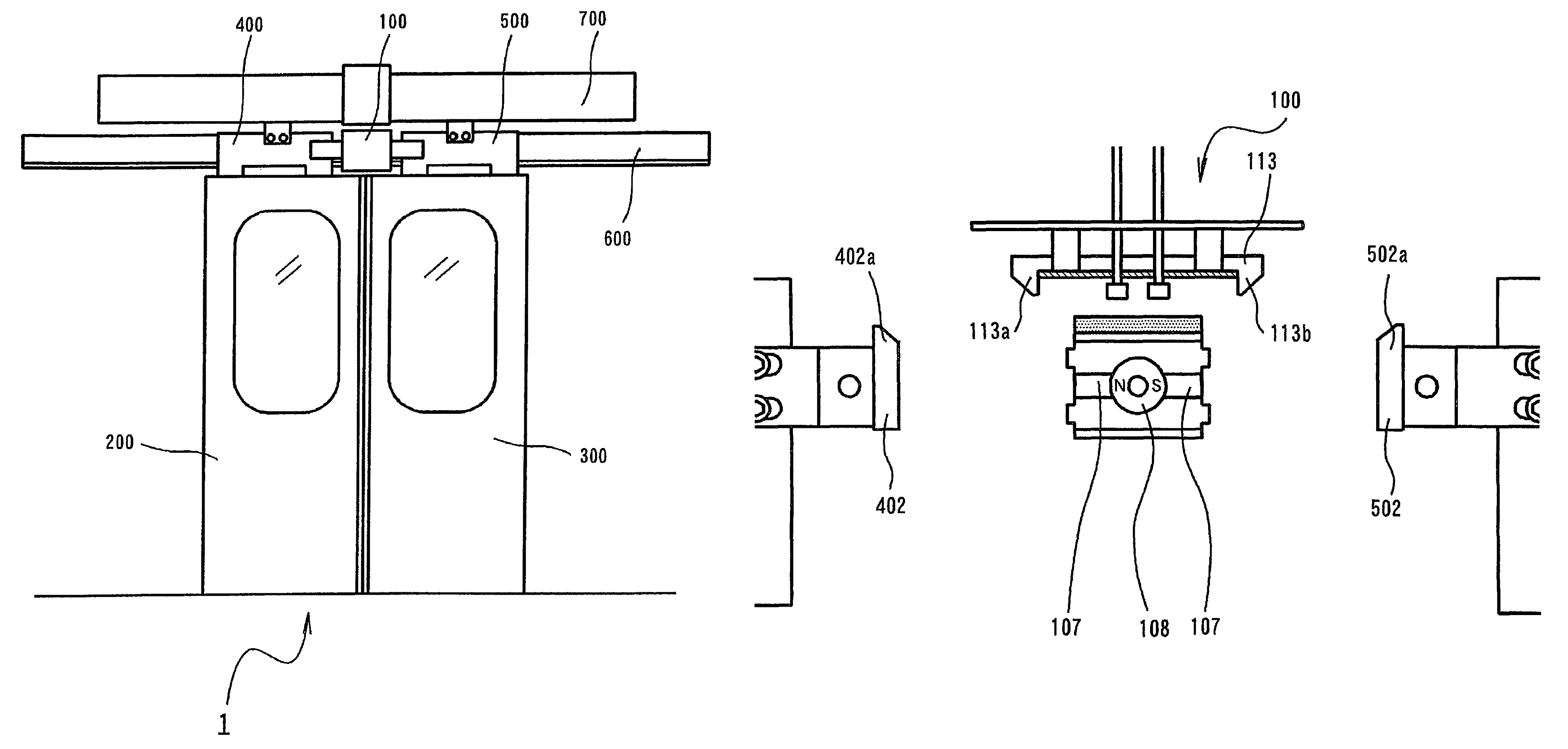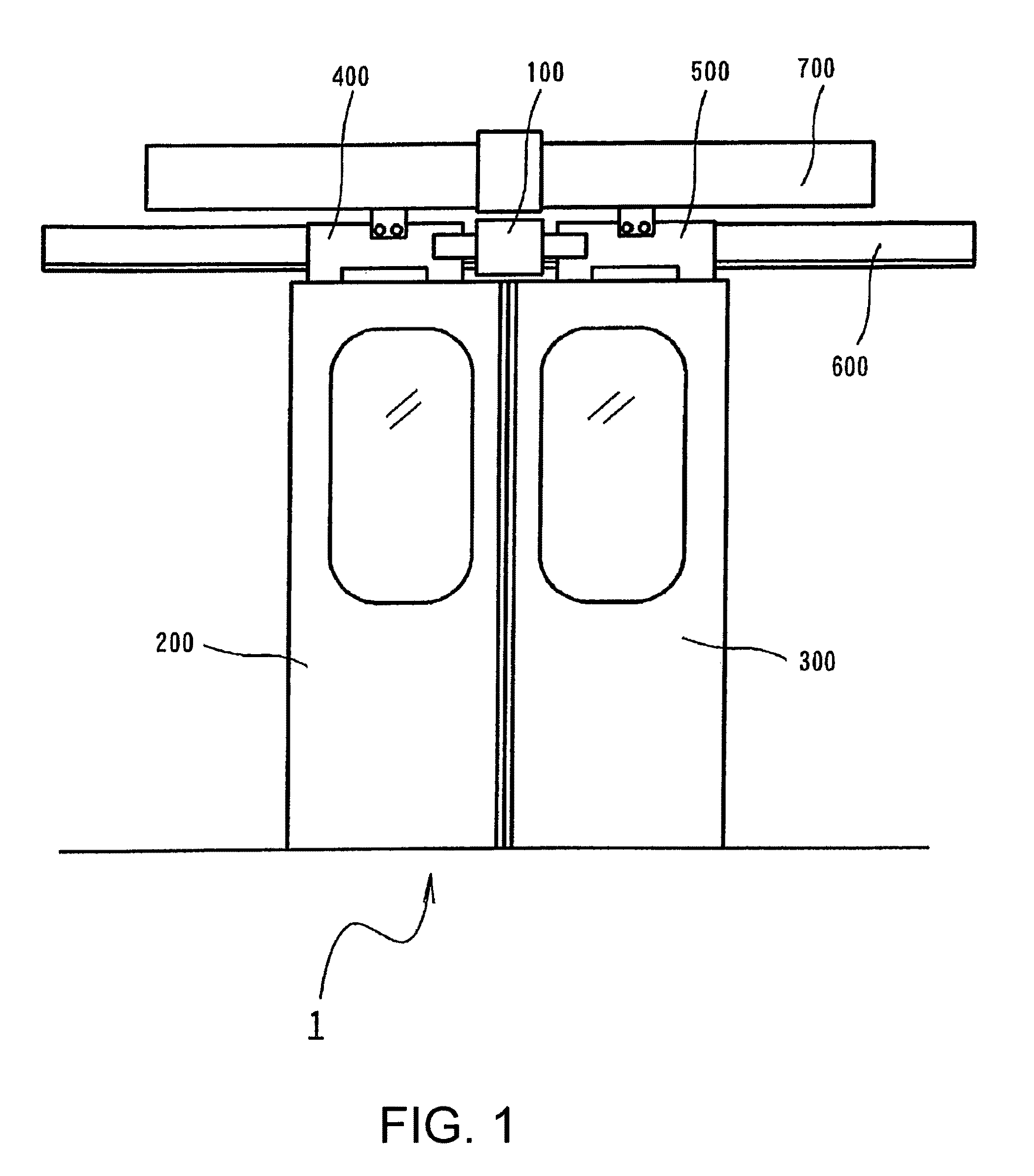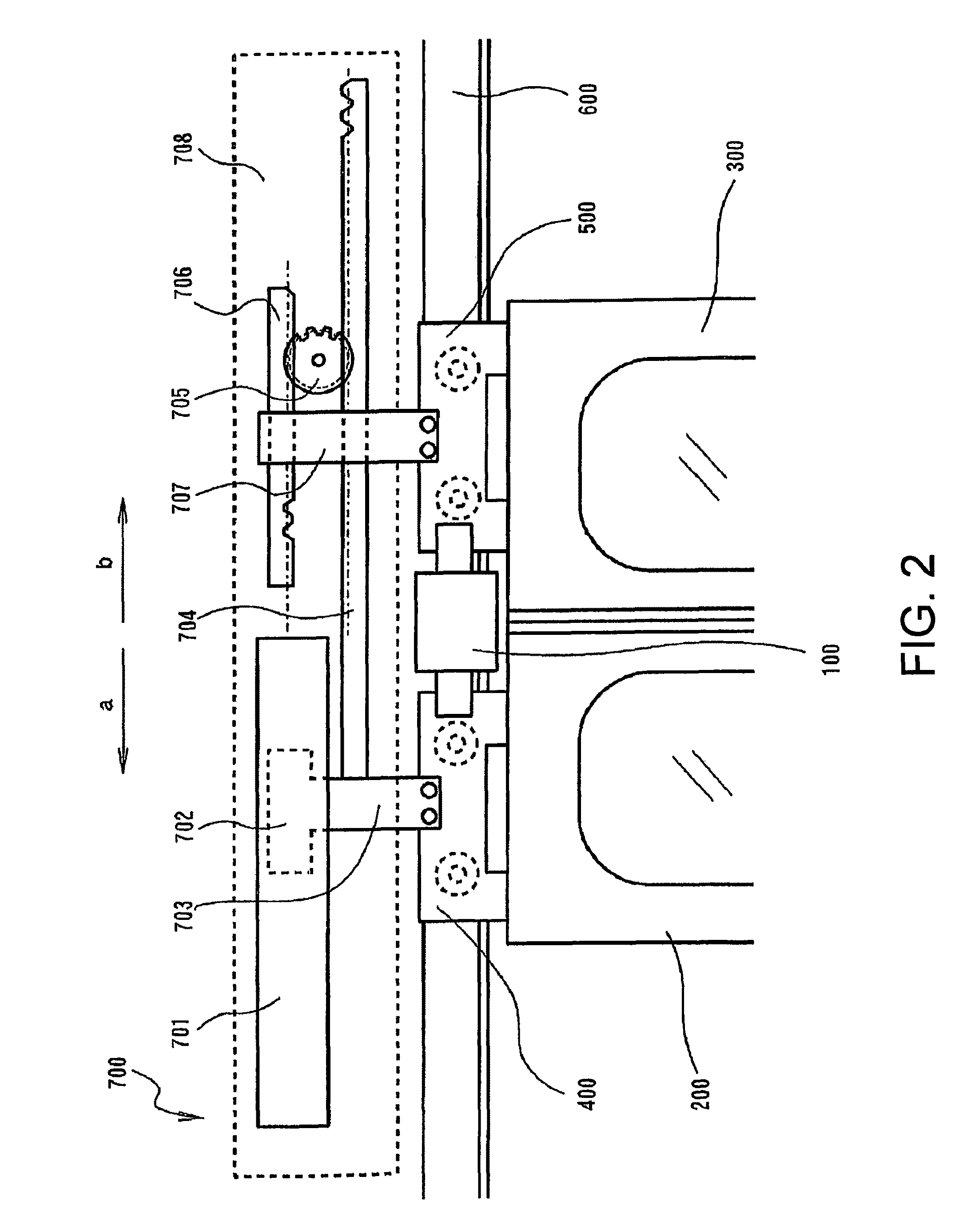Sliding door opening/closing device for vehicle
a technology for sliding doors and latches, which is applied in the direction of locking applications, wing accessories, transportation and packaging, etc., can solve the problems of increasing the resistance force applied to sliding doors, unable to lock with the latch, and difficult to perform positioning, so as to reduce the force necessary, reduce the force, and the effect of sufficient opening/closing drive for
- Summary
- Abstract
- Description
- Claims
- Application Information
AI Technical Summary
Benefits of technology
Problems solved by technology
Method used
Image
Examples
Embodiment Construction
[0054]The embodiments of the present invention will be described below with reference to the appended drawings. The entire structure of the sliding door opening / closing device 1 for a vehicle will be in initially explained with reference to FIGS. 1, 2, 3, and 4. As shown in FIG. 1, the sliding door opening / closing device 1 for a vehicle is provided at least with a lock device 100, a pair of left and right sliding doors 200, 300, a rail moving bodies 400, 500, a sliding door rail 600, and an opening / closing drive device 700.
[0055]The lock device 100 has a function of locking so as to prevent the pair of left and right sliding doors 200, 300 from opening when the pair of left and right sliding doors 200, 300 have been closed. The lock device 100 is generally composed of a magnetic lock device and a latch lifting lock device that will be described below in greater detail.
[0056]The sliding doors 200, 300 open and close the entrance / exit port of a railroad train by moving in the mutually...
PUM
 Login to View More
Login to View More Abstract
Description
Claims
Application Information
 Login to View More
Login to View More - R&D
- Intellectual Property
- Life Sciences
- Materials
- Tech Scout
- Unparalleled Data Quality
- Higher Quality Content
- 60% Fewer Hallucinations
Browse by: Latest US Patents, China's latest patents, Technical Efficacy Thesaurus, Application Domain, Technology Topic, Popular Technical Reports.
© 2025 PatSnap. All rights reserved.Legal|Privacy policy|Modern Slavery Act Transparency Statement|Sitemap|About US| Contact US: help@patsnap.com



